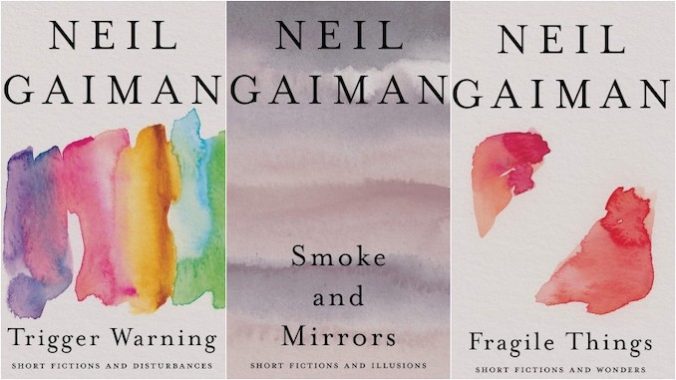The 15 Best Neil Gaiman Short Stories

Many readers know Neil Gaiman for his novels (American Gods, Stardust, Coraline) and comics (The Sandman), which are, admittedly, all brilliant and well worth your time. (Go read them, is that what I’m saying.) But what you might not know is that Gaiman is also a prolific short story writer, and has churned out dozens upon dozens of tales that include fairytale retellings, contemporary horror stories, murder mysteries, and several additional tales from the worlds of his novels.
Set in the worlds of Sherlock Holmes, C.S. Lewis, and H.P. Lovecraft as well as our own, Gaiman’s best short stories are those that take the things that are familiar and make them seem magical, recast the mundane with a sheen of the otherworldly, and generally have banger endings you won’t see coming.
Here are our picks for the fifteen best short stories in Neil Gaiman’s expansive, impossible catalog.

The Case of Death and Honey
Gaiman has written a couple of short stories set in the world of Sir Arthur Conan Doyle’s famous detective Sherlock Holmes (stay tuned for the second later on in this list). “The Case of Death and Honey” explores the origins of Holmes’s later-in-life fascination with beekeeping, and offers a compelling theory about why the elderly version of the character becomes so obsessed with such a seemingly mundane hobby. (The man did do a ton of cocaine and chased criminals on the regular, after all.)
The story of Holmes’s growing apiary obsession is intertwined with that of an elderly Chinese beekeeper on the other side of the world, whose bizarre, aggressive wild mountain bees set him apart from the rest of his community. The tale mixes in elements of Doyle’s own The Adventure of the Creeping Man in a way that will delight fans of the original. (Also, spoiler alert: The ending of this story is perfect, and I wish I could read more of Gaiman’s idea of this universe.)
Read It In: Trigger Warning, The Neil Gaiman Reader, Weird Detectives: Recent Investigations

The Return of the Thin White Duke
Look, I’m not sure that I really need to write anything beyond Neil Gaiman basically wrote fanfiction about David Bowie to justify the inclusion of “The Return of the Thin White Duke” on this list, but, just in case, here goes.
This is a beautiful tale about self-creation, an alien fairytale that’s something of an origin story for one of Bowie’s most famous personas, a love letter to the man himself, and a perfect encapsulation of the deeply weird, consistently magical vibe he possessed that so many of us fell in love with. Bowie’s various personae have certainly inspired more than their fair share of art in multiple mediums—Gaiman himself very clearly used him as the visual inspiration for Lucifer in The Sandman—but this is perhaps the fictional version that feels the most like it might also actually be kind of true.
Read It In: Trigger Warning, The Neil Gaiman Reader, or on Neil Gaiman’s website
-

-

-

-

-

-

-

-

-

-

-

-

-

-

-

-

-

-

-

-

-

-

-

-

-

-

-

-

-

-

-

-

-

-

-

-

-

-

-

-








































